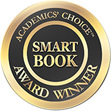The Primary Sources series is the winner of the 2015 Academics’ Choice Awards for the 2015 Smart Book Award in recognition of mind-building excellence.

The
20th Century Events Primary Sources is a set of four primary source packs. Each primary source pack includes 20 documents. Each primary source pack includes historical documents, maps, photographs, political cartoons, lithographs, diagrams, letters in a mix of color and black-and-white, and sepia finishes and is printed on sturdy 8.5” X 11” cardstock.
The four primary sources in the
20th Century Events Primary Sources are:
1. Civil Rights Movement Primary Sources Pack
2. Great Depression & New Deal Primary Sources Pack
3. The Cold War Primary Sources Pack
4. Women's Suffrage Movement Primary Sources Pack
We have created a
FREE Online Teacher’s Guide for Primary Sources to help you to teach primary sources more effectively and use creative strategies for integrating primary source materials into your classroom. This
FREE Online Teacher's Guide for Primary Sources is 15 pages. It includes teacher tools, student handouts, and student worksheets. Click
HERE to download the
FREE Online Teacher's Guide for Primary Sources.
20th Century Events Primary Sources are just what teachers need to help students learn how to analyze primary sources in order to meet Common Core State Standards!
Students participate in active learning by creating their own interpretations of history using historical documents. Students make observations, generate questions, organize information and ideas, think analytically, write persuasively or informatively, and cite evidence to support their opinion, hypotheses, and conclusions. Students learn how to integrate and evaluate information to deepen their understanding of historical events. As a result, students experience a more relevant and meaningful learning experience.
Your students will:
• think critically and analytically, interpret events, and question various perspectives of history.
• participate in active learning by creating their own interpretations instead of memorizing facts and a writer’s interpretations.
• integrate and evaluate information provided in diverse media formats to deepen their understanding of historical events.
• experience a more relevant and meaningful learning experience.